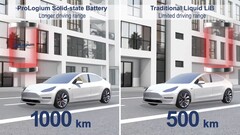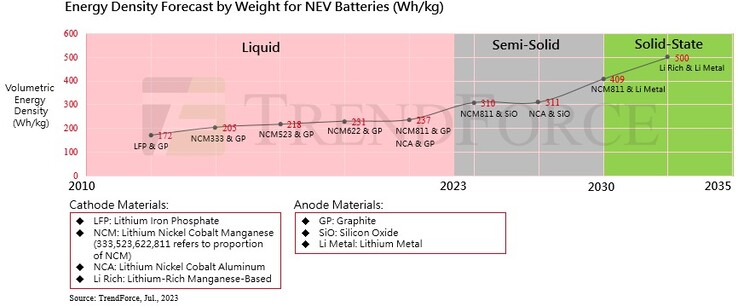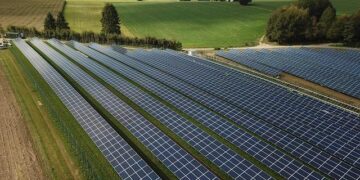 A solid-state battery can double current Tesla models’ range (image: ProLogium/YouTube)
A solid-state battery can double current Tesla models’ range (image: ProLogium/YouTube)
Solid-state batteries with double the average density of current EV packs are no longer a pipe dream, according to new analysis, as more and more auto or battery makers have come up with viable cost solutions. The timeframe for their mass production for use in EVs is set for the 2030-2035 period.
With Toyota’s recent solid-state EV battery breakthrough announcement which pegs them ready for mass production in 2027, the world’s biggest batter maker CATL may have to reconsider its 2030 forecast. If Toyota manages to lever its novel solid-state battery production process, that is, because research firm TrendForce seems to side with CATL’s timeframe on this one.
In its latest report, titled “Solid-State Battery-Equipped NEVs Poised to Rival Gasoline Vehicles in Range, Expected to Enter Mass Production by 2030,” the analysts somewhat contradict the title by concluding that solid-state packs will only enter mass manufacturing after 2029. “Automakers are actively ramping up their investments and research into solid-state batteries. With the integration of high-activity cathode and anode materials, these solid-state batteries are projected to enter mass production sometime between 2030 and 2035,” they add. Coincidentally, that’s precisely the period when the federal government’s tax credit of US$7,500 per new EV is scheduled to run out.
While nearly every major automaker and battery brand, as well as numerous startups have announced solid-state battery aspirations, research breakthroughs, or even production plans, only a few are taking steps towards mass production already. New production processes, as well as material discoveries, however, hint that viable manufacturing costs can be achieved relatively soon, including by stalwarts like Toyota or Mercedes with its ProLogium partner.
With the advent of solid-state battery EVs, no matter if it happens a couple of years from now, or after 2030, TrendForce predicts doubling their range on a charge and achieving range parity with gas vehicles. The current expensive nickel batteries power EVs for an average range of about 400 miles, while those with cheaper phosphate cells like the base Model 3, offer 300 or less.
The solid-state cells currently in development, however, return energy density of 500 Wh/kg, or nearly double that of current battery packs in electric vehicles. Since “solid-state batteries are emerging as an optimal battery solution, striking a balance between safety and energy density,” tips TrendForce, they have the biggest chance to allow electric vehicles achieve range parity with ICE cars, which Tesla recently argued that the EPA can ban with clear conscience as soon as 2030.
Get the ChargePoint 50A Home Flex EV Charger on Amazon
 The solid-state EV battery energy density forecast (graph: TrendForce)
The solid-state EV battery energy density forecast (graph: TrendForce)
Daniel Zlatev – Tech Writer – 799 articles published on Notebookcheck since 2021
Wooed by tech since the industrial espionage of Apple computers and the times of pixelized Nintendos, Daniel went and opened a gaming club when personal computers and consoles were still an expensive rarity. Nowadays, fascination is not with specs and speed but rather the lifestyle that computers in our pocket, house, and car have shoehorned us in, from the infinite scroll and the privacy hazards to authenticating every bit and move of our existence.
>>> Read full article>>>
Copyright for syndicated content belongs to the linked Source : NotebookCheck – https://www.notebookcheck.net/Solid-state-battery-powered-electric-vehicles-to-hit-range-parity-with-gas-cars-before-tax-credits-run-out.733731.0.html































